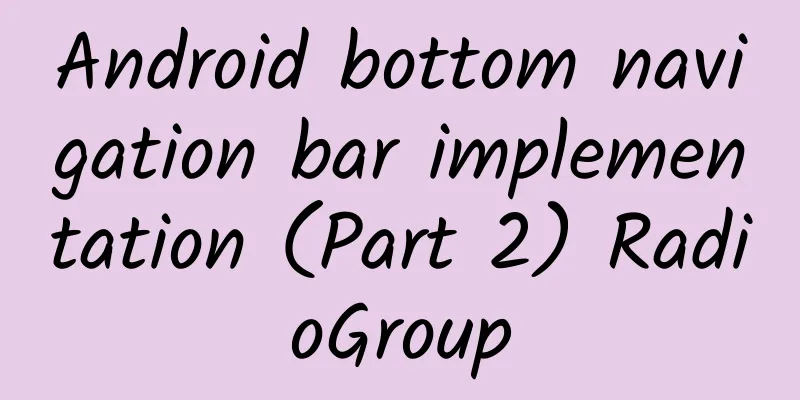Android bottom navigation bar implementation (Part 2) RadioGroup

|
Here is a brief record of the implementation of the Android bottom navigation bar through RadioGroup+Fragment. layout:
Here the drawableTop uses a state selector
style
Code The initialization code is not recorded, it is all findViewById, and the implementation process is nothing more than monitoring the RadioButton:
Status settings
It should be noted here that setDefaultFragment(); I wrote in onCreateVew and it did not take effect. Here I wrote it in the onStart() method.
Note: These articles do not have too much text description, because these things are not very difficult, and they are commonly used. I believe that many people are familiar with them. It is nonsense to say more. It is clearer to read the code directly. |
<<: Android bottom navigation bar implementation (I) BottomNavigationBar
>>: Android bottom navigation bar implementation (Part 3) TextView+LinearLayout
Recommend
Text layout performance improved by 60%, Inline Text technology principle and implementation
Alipay clients have a strong demand for dynamics....
6 marketing strategies that work well on the Internet and in physical stores, with 18 real cases included!
Without further ado, let’s get straight to the po...
How to design a high-conversion training camp from scratch?
I've been receiving a lot of inquiries about ...
5 general methods to increase user growth!
This article gives examples of 5 common methods t...
One hour of sun exposure and 10 kilometers of battery life: Lightyear-1's journey of technological innovation
Your browser does not support the video tag Autho...
Are you still playing with your phone before bed? Be careful!
After a busy day, I washed up and lay down on the...
First exposure! This star orbits a black hole in a spaghetti-like shape
Astronomers have observed a massive black hole de...
For the entire process of online event operation, just read this article!
Event operations play an important role in the op...
TrendForce: In Q4 2023, the revenue of the world's top ten wafer foundries reached US$30.49 billion, with SMIC ranking fifth
According to the latest report released by TrendF...
Agina: I am the earliest rocket upper stage and also a multi-talented person in aerospace
Agena is the earliest rocket upper stage and an i...
How to promote advertising on Kuaishou? How much does it cost to promote on Kuaishou?
1. How effective is Kuaishou advertising ? Everyo...
Huawei's third-generation intelligent torque control system is first used in Avita
Judging from the current results, Huawei has buil...
Flex your fingers every day and take home the Nobel Prize
There is a way to show off your power at the lowe...
Does the past of smartphones foreshadow the future of the metaverse?
The Metaverse is on the rise, and its hot scene s...









